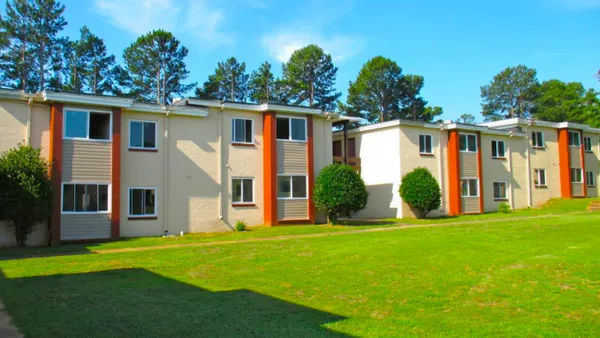Essex Property Trust’s core West Coast markets saw new lease rents turn positive in the first quarter, with Northern California rising 1.5%, Seattle increasing 1.3% and even Southern California ticking up 20 basis points.
Overall, the Palo Alto, California-based REIT achieved 2.8% blended net effective rent growth in Q1, which was slightly ahead of its expectations. Despite this solid performance, Essex was not ready to increase guidance for the full year, with uncertainty around U.S. trade policy leading to economic turbulence.
“As we navigate this complex environment, we will be nimble with our operating and investment strategy, [and] remain focused on our objective to maximize revenues and to generate long-term accretion,” CEO Angela Kleiman said on the call last week.
Essex’s decision to maintain its GAAP same-store revenue, expense and net operating income growth guidance of 3.0%, 3.75% and 2.7%, respectively, was expected by Anthony Paolone, executive director at JPMorgan.
“Similar to its apartment REIT peers that have reported thus far, we find no surprise in Essex maintaining its guidance despite the outperformance in the quarter,” Paolone said in a research note shared with Multifamily Dive.
Drivers of growth
Despite not raising guidance, Essex likes the supply-demand fundamentals in its major West Coast metros.
“Total new housing supply delivery as a percentage of stock in 2025 is exceptionally low at only 50 basis points in the Essex markets and is expected to moderate throughout the year and to decrease further in 2026,” Kleiman said.
The CEO pointed to two factors driving Essex’s Q1 performance. First, after being elevated in the years following COVID-19, delinquency is falling. In Los Angeles, a trouble spot for apartment operators, delinquency improved to 1.3% of scheduled rent compared to 3.9% in Q1 2024.
“Second, we executed our operating strategy, which contributed to a notably low turnover rate of 35%, while achieving positive new lease rate growth and stable occupancy levels,” Kleiman said.
As turnover and delinquency improve, the job situation seems to be getting better in Essex’s tech markets.
“When we look at the third-party reports, what we're seeing is that the open jobs of the top 20 tech companies — that's the most meaningful indicator of the health of that sector — has remained steady and [is] incrementally increasing each month,” Kleiman said. “So it troughed in around November, [and] December, but that's typically a seasonally low period. But since then, every month it has increased. And that gives us an indication of the hiring to come.”
Q1 performance
Parts of Northern California — specifically Santa Clara and San Mateo counties — and Seattle led Essex’s portfolio in Q1. Even struggling markets in those areas are starting to turn around.
Despite Oakland being a drag on Essex’s portfolio with negative 1.2% in new lease rate growth in the first quarter, the city has begun to “demonstrate incremental improvement as supply abates and concessions moderate,” Kleiman said.
“[In] Oakland, what we’re showing is that 75% of the supply is delivering in the first half,” Kleiman said. “So by mid-year, we expect Oakland to start to revert back to a more normalized market dynamic. I don’t think it’s going to happen overnight, but it’s finally going to turn.”
Southern California still lags Northern California and Seattle, though it is improving. For Los Angeles, delinquency needs to return to near historical average, according to Kleiman. “Right now, we're making great progress, but we're not there yet,” she said. “Delinquency at 1.3% is still well above the historical average in LA.”
Once delinquency falls, Essex can start building occupancy and eventually pricing power. But there are headwinds with the film industry still struggling, according to Kleiman.
BY THE NUMBERS
| Category | Q1 | YOY Change |
| Revenue | $395.6 million | 3.4% |
| Net operating income | $284.9 million | 3.3% |
| Operating expenses | $124.3 million | 3.8% |
| Funds from operations | $3.97 | -13.7% |
| Average rent | $2,667 | 2.1% |
| Occupancy rate | 96.3% | 0 bps |
SOURCE: Essex
“As far as the market is concerned, [the] labor market remains soft,” Kleiman said. “And I think that is [due to] a lot of things happening there, I don't think that's too dissimilar from a national level in terms of just a generally soft employment economy.”
Click here to sign up to receive multifamily and apartment news like this article in your inbox every weekday.






































